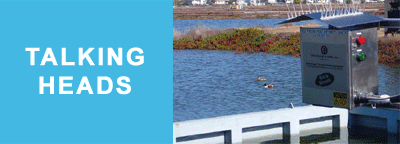Ryan Rangel has been in the M2M industry for a number of years, most recently as president of ClearConnex, a software engineering firm based in Raleigh, North Carolina, USA. Here, M2M Now talks to him about the
ClearConnex ‘start-ahead finishahead’ philosophy and how this benefits customers.
M2M Now: How do you see the M2M industry changing?
 Ryan Rangel: The industry is maturing in two ways. First, there is increased globalisation. People want devices that work anywhere. Companies that built devices to work strictly in America with CDMA are now finding out they need to service Europe, and vice versa with European companies needing to get through US carrier certifications.
Ryan Rangel: The industry is maturing in two ways. First, there is increased globalisation. People want devices that work anywhere. Companies that built devices to work strictly in America with CDMA are now finding out they need to service Europe, and vice versa with European companies needing to get through US carrier certifications.
Secondly, every day companies are finding new uses for wireless M2M technology. We are interested in these new companies that are coming to the market. For every one mature M2M user there are 100 new users, which are the type of companies we can help.
A good example of this is a project we did with MeterReader. In most cities in the USA people are billed for water and sewage at the same rate. They assume that the amount that comes in is the as same as what goes out and they are billed accordingly. But say you have a swimming pool or a large water cooler, a lot of water is evaporated. If you, therefore, meter the water coming in and going out, there is a big difference. So you should not have to pay as much for the sewage.
Another example is our work with InterOcean, a company focused on oil spill monitoring. Interocean have built a device that goes on a buoy and checks for oil to show signs of a spill. It uses cellular to get that data back to the servers.
The InterOcean Slick Sleuth SS300 and the ClearComm programmed cellular modems are going into oil spill monitoring stations along the Tigris River in Baghdad, Iraq. Some units are being installed midriver (on locally constructed buoys) and some are being installed on bridge piers and shoreside structures. Other locations that we are monitoring for
spills include California’s Bolsa Chica wetlands, at the intakes of desalination plants throughout the Middle East, and on oil terminal piers along the coast of Brazil.
These are the kind of new companies and applications that we can service and support. There are a large number of these new applications out there which can benefit from ClearConnex’s future-proofing ‘start ahead’ technology. In the business world where time to market is key, not starting from scratch is essential.
M2M Now: Ryan, you mentioned ‘not starting from scratch’ and ‘future proofing’. Is this how you differentiate yourselves from other M2M engineering firms?
RR:In today’s market, there are two options that most have. You can take an off-the-shelf box and pay for a long list of vague functions, when in reality you might only need three specific ones. Or you can use engineers to build a design from scratch, which can take 18 months or more and cost a lot of money. We are an innovative engineering firm that is out to change that. What we have are a proven set of licensable software and hardware products as customisable building blocks. This approach combines the flexibility and functionality of custom development with the cost effectivness of an off-the-shelf solution. This is what we mean when we talk about our ‘Start Ahead. Finish Ahead.’ philosophy.
When I worked for module manufacturers I can’t tell you how many times I saw the same engineering firm do essentially the same project multiple times for different customers and each time they started from scratch. Internal engineering teams are also building the same devices as other companies out there, so every one is re-inventing the wheel and they don’t have to.
Most of our projects involve a combination of engineering services and licensing of mature software and hardware building blocks. This way a customer can get to market in a fraction of the time and expense it takes for a traditional engineering firm to complete a product. And when the customer is open to bundling network services as we do with Wyless, the cost savings can be even more significant.
On future proofing, the best example is with cellular. You might have spent a year developing something for the US market and paid to get it certified. Then you find the modules have an end of life or you now have potential customers elsewhere in the world. Either could involve vast amounts of redevelopment. The same is true if you have a 2G or GPRS module and you want to migrate to 3G. With ClearConnex’s future proofing building blocks ClearComm and ClearLink
your devices will still be relevant no matter how the industry changes.
M2M Now: Can you explain in customer benefit terms how ClearConnex building blocks improve time-to-market?
RR:Time to market is key. It can make or break companies. It’s that simple, yet no one states how they will accomplish that for you. ClearConnex’s innovative engineers have developed core licensable hardware and software platforms such as our most popular ClearLink and ClearComm that will rapidly accelerate project completion. These building blocks represent the basics that all M2M applications need, so by starting with our platforms we can spend all of our time focusing on our customers’ value added features rather than spending our time designing from scratch.
M2M Now: You mentioned ClearLink and ClearComm. Tell me more about them.
RR: ClearLink is our wireless module control library providing an application programming interface (API) developers use to build applications for any wireless M2M module allowing future proofing without needing to learn the ins and outs of wireless modules, wireless technology or technology generation. It supports more than 40 modules from leading industry manufactories such as Cinterion, Huawei, Janus, Maestro, Sierra Wireless, SimCom, Telit and u-blox. Next would be ClearComm a mature, proven, hardware-agnostic software platform that can be loaded on any off-the-shelf modem or added to custom designed hardware resulting is cost and time savings.
What these two do is enable an application to be financially viable. Take the case of the oil spill application. ClearComm provided them with 80% of the functionality they needed, which meant we just had to add the other 20%. This meant the job took four weeks rather than the six months it would have taken starting from scratch with a traditional engineering company. Developing the meter reading application took four to six weeks, and again that would have been a six-month project.
M2M Now: You mentioned earlier that customers could bundle Wyless services with ClearConnex’s. How is that?
RR: Wyless acquired ClearConnex back in May 2012. The infusion of funding has allowed exponential growth within ClearConnex. We have remained a separate company focusing on our same innovative approach to engineering M2M devices. However, now ClearConnex and Wyless offer bundling, and in some cases subsidising products and engineering services with Wyless network services. Remaining a separate company also allows ClearConnex to work with any
customer no matter which cellular provider they use.
M2M Now: Have you been able to expand your market reach as well?
RR: Yes, we have. Being able to leverage Wyless’ sales team has been the leading factor to our growth. We just had some of our first European customers due to them. ClearConnex is now an official global engineering firm. We’ve also started hiring engineers in Europe due to the overseas presence.
M2M Now: Can you give me an example of a Wyless and ClearConnex bundle?
RR: The Quickstart development kit would be our most popular bundle. Customers can buy these kits from ClearConnex, The Semiconductor Store and Richardson RFPD. Customers receive a wireless module development kit from a leading wireless modules manufacturer, a 90-day free trial for Wyless managed services, a free trail account from industry leading device and application management platforms, and an array of different test tools depending on the kit you’ve
purchased from ClearConnex, including ClearTerminal, ClearComm, and ClearLink.
We’ve designed this kit to accelerate the development of companies’ next wireless device by reducing the wireless technology learning curve, removing barriers to entry and drastically speeding up wireless application development.
M2M Now: Is ClearConnex involved with specific verticals, or can you cover a wide range of industries?
RR: ClearConnex is a horizontal company that is able to work across all verticals. Our licensable hardware and software can be customised to accomplish basically any task no matter the industry. We have worked in verticals anywhere from detecting oil spills and meter reading as mentioned earlier to tracking medical supplies and fleet management. The list is truly endless. It is about solving unique problems that are not part of the mainstream.
M2M Now: What is next for ClearConnex?
RR: Growth. Not only can the industry and customers see ClearConnex growing in size but our product line is constantly growing as well. We are always porting ClearComm to new modems, adding new application server platforms that support ClearComm protocols, and adding new wireless application server platforms that support ClearComm protocols and adding new wireless module support to ClearLink. On top of new partnerships, we have also developed numerous
plug-in cards. We are here to stay in the wireless M2M Industry.










